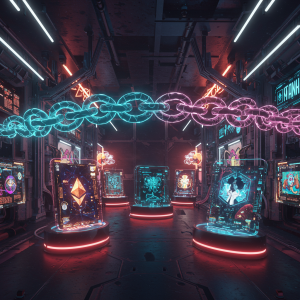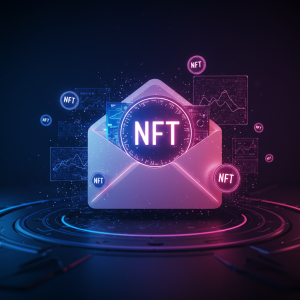Transforming Creator Economics: NFT Subscription Models for Recurring Revenue

The evolution of NFTs has transcended far beyond simple digital collectibles. While early NFT projects focused primarily on one-time sales and speculative trading, we’re now witnessing the emergence of sophisticated subscription models that generate predictable, recurring revenue streams for creators and brands. This shift represents a maturing ecosystem where sustainable business practices are replacing get-rich-quick mentalities.
The Foundation of NFT Subscriptions
At their core, NFT subscription models leverage smart contract functionality to deliver ongoing value to token holders while providing creators with consistent income. Unlike traditional subscriptions that typically require monthly credit card charges, NFT-based systems use blockchain technology to manage access, distribute benefits, and process payments automatically.
The beauty of this approach lies in its versatility. Subscriptions might offer access to exclusive content, early product releases, community participation, or physical goods—all managed through ownership of specific tokens. This creates what many industry insiders call “membership as an asset” where subscribers not only receive ongoing benefits but potentially own a piece that could appreciate in value.
“We’re seeing the convergence of community building and financial innovation,” explains digital economy researcher Sarah Jenkins from the Web3 Economics Forum. “NFT subscriptions transform passive consumers into active stakeholders, fundamentally altering the relationship between creators and their audiences.”
Diverse Models Gaining Traction
Several distinct NFT subscription approaches have emerged across different sectors:
Time-based access tokens function similarly to traditional subscriptions, where holding specific NFTs grants benefits for predetermined periods—typically monthly or yearly. Smart contracts can automatically revoke access when the subscription period ends unless renewed through additional payments. This model provides familiar mechanics for consumers transitioning from Web2 services.
Tiered membership systems employ different NFT collections representing varying levels of benefits and pricing. Entry-level tokens might offer basic access, while premium NFTs unlock comprehensive privileges. This approach allows creators to serve different audience segments based on commitment level and willingness to pay.
Perhaps most innovative are perpetual royalty structures where initial NFT purchases include lifetime subscriptions, with creators earning revenue through secondary market royalties. Each time subscription tokens change hands on marketplaces, original issuers receive percentage cuts—incentivizing them to maintain high-quality offerings that sustain resale value.
For projects requiring more predictability, renewable NFTs incorporate expiration dates after which they must be “recharged” through additional payments or actions. This hybrid approach balances the collectible aspect of NFTs with sustainable business operations.
Building Community Through Subscription Tokens
The social dimension of NFT subscriptions often proves as valuable as their financial aspects. Token holders typically gain access to private Discord servers, Telegram groups, or dedicated platforms where they connect with like-minded individuals and the creators themselves.
These communities foster belonging that transcends transactional relationships. Members collaborate on projects, provide feedback on upcoming releases, and sometimes participate in governance decisions. The resulting engagement creates powerful retention mechanisms that traditional subscription services struggle to match.
You can learn more about building engaged NFT communities on our homepage, where we explore strategies for sustainable growth in the Web3 space.
Implementation Strategies for Creators
Implementing successful NFT subscription programs requires thoughtful planning beyond technical considerations. Creators must carefully balance value delivery against operational capacity while ensuring pricing models reflect both market realities and production costs.
Content scheduling proves crucial for maintaining subscriber satisfaction. Many successful projects employ quarterly roadmaps detailing upcoming benefits, creating transparency that builds trust with token holders. This approach aligns with findings from the Subscription Economy Institute, which indicates predictability significantly improves retention rates across all subscription types.
The most sustainable models incorporate feedback loops where subscriber input shapes future offerings. This co-creation process not only improves product-market fit but deepens community investment in the project’s success. When members feel their voices matter, they become advocates rather than just customers.
Technical Infrastructure and Considerations
The underlying technology supporting NFT subscriptions continues evolving rapidly. Early implementations often required complex smart contract interactions that confused mainstream users. However, emerging platforms now offer no-code solutions for creators without technical backgrounds.
Payment mechanisms have similarly matured. While initial models relied exclusively on cryptocurrency transactions, newer systems incorporate fiat on-ramps and familiar payment methods. This accessibility expansion broadens potential audiences beyond crypto enthusiasts to include mainstream consumers.
Interoperability between different blockchain ecosystems presents another frontier. Projects building on multiple networks can now offer cross-chain subscription benefits, allowing token holders to access privileges regardless of their preferred blockchain. This flexibility removes technical barriers that previously fragmented communities.
Challenges and Future Directions
Despite promising developments, NFT subscription models face significant challenges. Regulatory uncertainty looms large, particularly regarding securities classifications and consumer protection requirements. Projects must navigate complex legal landscapes that vary by jurisdiction while maintaining compliance.
Market education remains another hurdle. Many potential subscribers still associate NFTs exclusively with speculative art trading rather than functional membership programs. Changing these perceptions requires clear communication about practical benefits beyond potential appreciation.
Looking forward, we’re likely to see greater integration between physical and digital subscription benefits. Limited edition merchandise, exclusive event access, and real-world experiences increasingly complement digital offerings, creating comprehensive value propositions that bridge virtual and tangible realms.
The subscription model itself may evolve toward dynamic pricing systems that adjust based on usage patterns, market conditions, or individual member history. Such personalization could optimize the value exchange for both creators and subscribers while enhancing sustainability.
For organizations exploring recurring revenue opportunities in Web3, NFT subscriptions represent not just a technological innovation but a fundamental rethinking of customer relationships. By transforming one-time transactions into ongoing engagements backed by digital ownership, these models create alignment between creator success and community benefit that traditional approaches simply cannot match.








